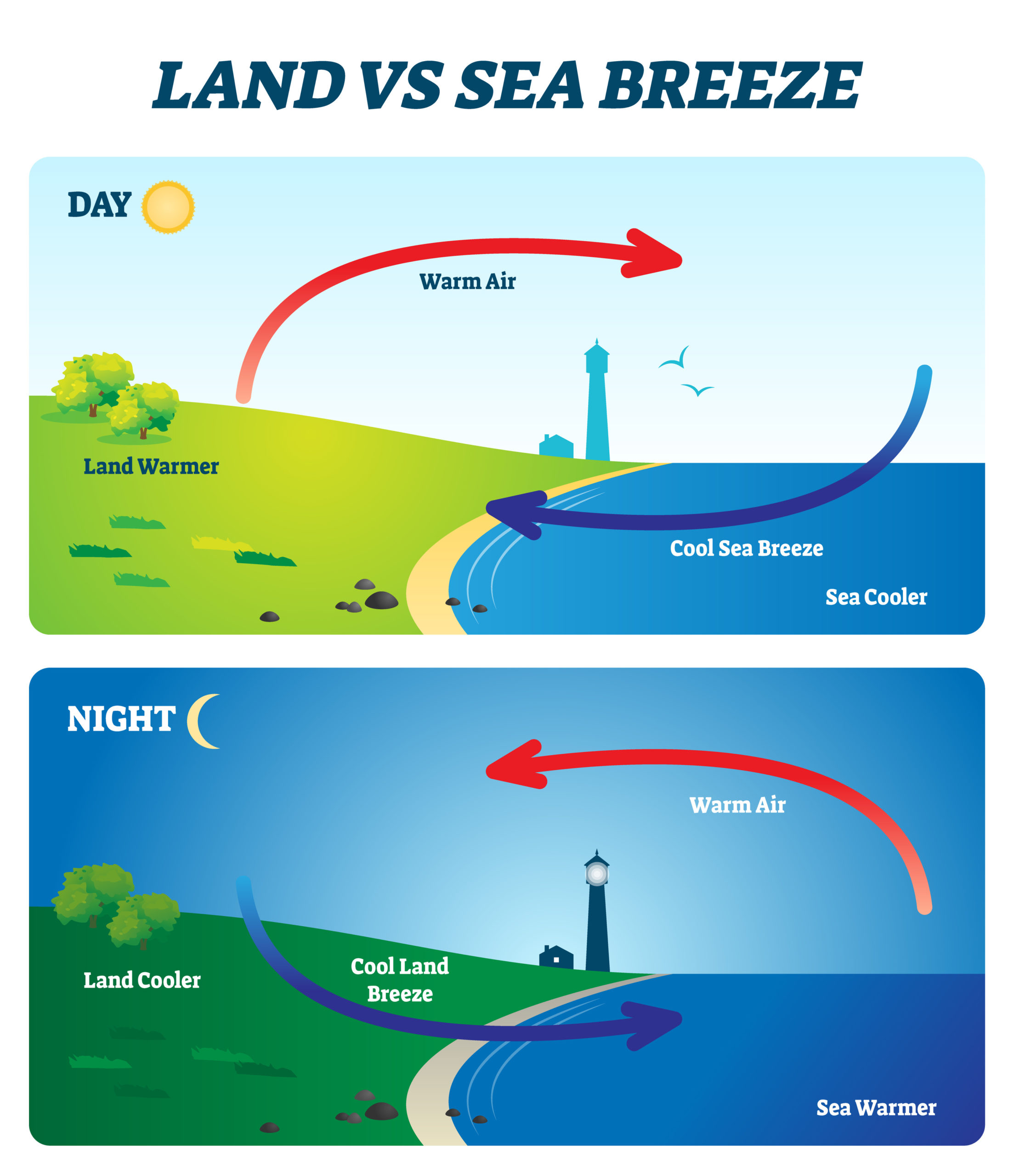What type of heat transfer takes place from the sun to Earth?
radiation
Correctly name the main parts of the water cycle.
Evaporation, condensation, precipitation
What is the main reason for different seasons in the Northern and Southern Hemispheres?
Earth's tilt on its axis as it orbits the Sun
How might changes in the glaciers be reduced or prevented in the future?
Changes caused by human activities can be reduced by using non-fossil fuel alternative energy sources such as solar, wind, or hydroelectric power.
Why would cause a hurricane to change direction?
Changing wind directions
Explain how something is heated using conduction.
When using conduction, the objects must touch to be heated.
Explain how clouds form.
Water evaporates from Earth's surface as it changes from liquid to gas. At high altitudes, water vapor and dust particles condense into clouds. Low pressure conditions also help clouds form.
What causes global winds?
Uneven heating of Earth's surfaces
Describe a feature an engineer would use to improve safety and reduce damage during a catastrophic event?
windows with shatterproof glass, built on stilts, made of concrete, etc.
Long-term temperature, winds, clouds, and precipitations patterns in an area.
What is climate?
What are convection currents?
Convections currents are currents of air or water that constantly rotates, the cool air/water will fall and the warm air/water rises. The warm air cools and sinks and the cycle continues.
What is the Coriolis Effect?
The effect of Earth's rotation on the direction of winds and currents
Front
How might a warm water current that passes by a coastal region have an effect on the region’s weather?
It would bring heat energy, leading to higher average temperatures in the coastal region.
What instruments or technology would a meteorologist use to collect weather data?
A meteorologist would use instruments like a barometer to measure air pressure, thermometer for temperature, anemometer for wind speed, rain gauge for precipitation, hygrometer for humidity, wind vane for wind direction, weather balloons to collect upper atmospheric data, weather satellites for broader atmospheric views, and weather radar to detect precipitation location and intensity.
What relationship exists between altitude and temperature?
What is a cold front? A warm front?
Cold front - a mass of cooler air pushes underneath a warmer air mass, forcing the warm air to rise
Warm Front - a mass of warm air pushes forward and rises over a cooler air mass
Explain how sea and land breezes form.

How are instances of climate change in Earth’s past similar to and different from the episode of climate change Earth is currently experiencing.
In the Earth’s history, it has undergone periods of both global warming and global cooling. However, according to NOAA, Earth is currently in a long-term warming trend in which 2015 was the warmest on record. The average surface temperature of Earth has risen by about 1.0°C (1.8°F) since the late 19th century. This increase in temperature is much quicker than would be expected due to typical warming.
What conditions must be present to cause lake effect snow?
a cold, dry air mass moving over warmer lakes
What contributes to uneven heating of Earth?
The uneven heating of the Earth is primarily caused by the Earth's spherical shape, its tilt on its axis, and the varying ability of different surfaces like land and water to absorb and reflect sunlight, resulting in more direct sunlight hitting the equator and less reaching the poles, leading to significant temperature differences between regions.
What conditions are best for a vortex to form?
Tornadoes form when two air masses of sharply different temperature and humidity meet, normally over land.
What air pressure system holds more moisture and why?
A low-pressure system generally holds more moisture than a high-pressure system because warm air rises in a low-pressure system, and warm air can hold more moisture than cold air; whereas in a high-pressure system, air tends to sink, which is typically cooler and drier air.
What would happen if a large body of warm, salty ocean water met a body of cold, less salty ocean water?
the warmer, saltier water will generally rise to the surface while the colder, less salty water sinks to the bottom because the warmer, saltier water is less dense and will float on top of the denser, colder water
Explain why collecting weather data for 30 days in a row would not be sufficient for determining an area's climate.
Collecting weather data for only 30 days is not enough to determine an area's climate because climate refers to the long-term average weather patterns over many years, not just a short period, meaning seasonal variations and extreme weather events that might not occur within a 30-day window would be missed, providing an inaccurate representation of the area's typical conditions.